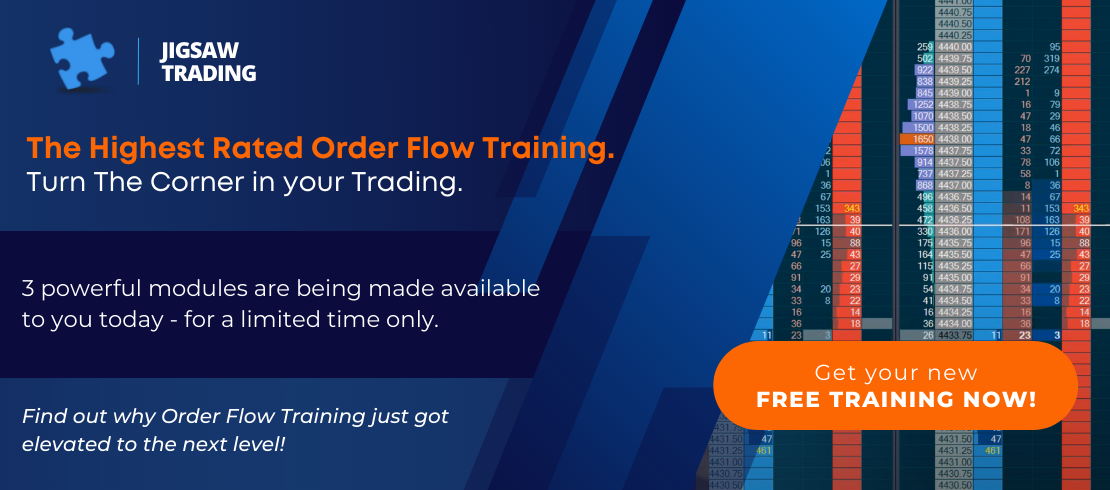Many traders gravitate towards the S&P500 Futures as their go-to-market, as it's the single most "advertised" market in the futures arena. It effectively acts as the 'default' market to trade. It might, however, not be the best-fit market for you personally. We are all different, and we all have different interest/boredom thresholds, which will impact the type of markets we can work with initially. I say initially because over time the type of markets you can read will expand with your experience. You may end up watching a range of markets, each with very different volatility profiles, looking out for momentum moves in each one, even though momentum expresses itself differently in each. Initially, most will be working with 1 market - and that should be based on the best-fit for the trader in question.
Why would any market 'fit' you better than any other? Well, each market has its own personality, defined by the amount of volatility there. If you look at Index Futures, the S&P500, and the NASDAQ 100 Futures are highly correlated. Yet they could not be more different from an order flow/volatility perspective. This is only natural given their tick sizes. The S&P500 comes in at $12.50 per tick moved, whereas the Nasdaq 100 is only $5.00 per tick. There is, in turn, way less liquidity on the Nasdaq 100 Futures, which correlates to more movement/volatility. Nasdaq 100 moves 10 ticks in the blink of an eye, whereas the ES takes much longer to move 10 ticks. Whether this means the Nasdaq 100 offers more opportunities is debatable.
Finding your best-fit market is a bit of a chicken-and-egg endeavor. Our advice has always been to perform drills on a range of markets to see if one "speaks to you" more than others. Initially, that will help you find a market to focus on. But this is usually at the early stages of your adoption of Order Flow techniques. Drills are for beginners and are there to help stop you from becoming overwhelmed with the information on the DOM. As you become more adept at reading and reacting to activity on the DOM, you might find that your idea of the ideal market or "easy-to-read market" changes.
I've seen numerous cases of people successfully shifting to a new "easier" market after 3–6 months of watching the S&P 500 Futures. People thought initially that the S&P500 Futures would be the ideal market, but then changed their minds after a fair amount of screen time on it. In some cases, the move has been to the frenetic Nasdaq 100 futures (the 'NQ'), others to WTI Crude (the 'CL'), and others to interest rate products, which are much slower paced. It's a big step for many, as they feel the time committed to the S&P500 Futures is wasted if they move to a new instrument. What is happening, in reality, is that the S&P500 Futures has trained you to see things that are easier to read on another market. It doesn't mean you've wasted time, on the contrary, it means you've advanced in your learning and can now identify a market that is easier to read for you personally. It's evolution, not a revolution.
In some cases, such as moving to a faster market like the NQ Futures, what you might be dealing with is a lower boredom threshold, where a certain amount of activity is needed to keep you focused on the DOM as the market plays out. In others, such as moving to a slower market, like the interest rate products, the change is about having additional time to make decisions. It's all about being in the most comfortable zone possible for you personally.
So how to choose the right market for you? Well, initially, using the drills to decide is definitely a good way to settle on the market you will focus on. Then 2–4 months out, take a breather and look at other markets again, you will be amazed at how some now look much clearer than they did before, even though you haven't been working with them. You'll be able to try out your "plays" on that market too - something you won't have been able to do on day 1.
As you develop as a trader, it's always worth periodically reviewing the markets you are trading, initially in order to find your "best fit" market - but later on, to add additional markets to the portfolio that you trade. Whatever market you trade, it's going to have days where conditions are not ideal to trade, and having back-up (especially non-correlated) markets to trade, means you'll be more likely to have good trading conditions on one of them on any given day. This means you'll be less likely to force yourself to trade in non-optimal conditions. So if one market is in a tight range, focus on one that isn't. If one market has weak momentum/follow-through, focus on one that is moving more cleanly. It's all about giving yourself markets you can COMFORTABLY read - which will grow over time.

